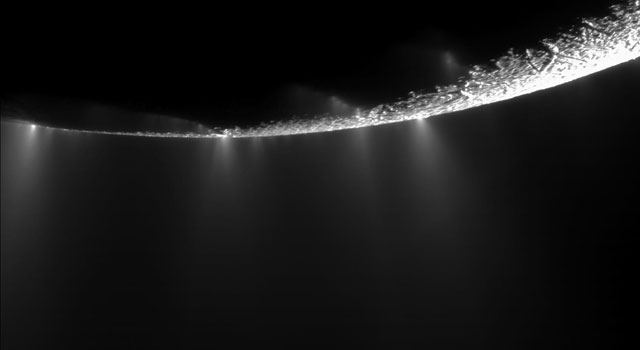

Asteroids May Have Brought Us Life’s Ingredients
Some asteroids may have been like “molecular factories” cranking out life’s ingredients and shipping them to Earth via meteorite impacts, according to scientists who’ve made discoveries of molecules essential for life in material from certain kinds of asteroids and comets.
In January 2000, a large meteoroid exploded in the atmosphere over northern British Columbia, Canada, and rained fragments across the frozen surface of Tagish Lake. Because many people witnessed the fireball, pieces were collected within days and kept preserved in their frozen state. This ensured that there was very little contamination from terrestrial life.
“The Tagish Lake meteorite fell on a frozen lake in the middle of winter and was collected in a way to make it the best preserved meteorite in the world,” said Dr. Christopher Herd of the University of Alberta, Edmonton, Canada, lead author of a paper about the analysis of the meteorite fragments published June 10 in the journal Science.
“The first Tagish Lake samples—the ones we used in our study that were collected within days of the fall—are the closest we have to an asteroid sample return mission in terms of cleanliness,” adds Dr. Michael Callahan of NASA’s Goddard Space Flight Center in Greenbelt, Md., a co-author on the paper.
The Tagish Lake meteorites are rich in carbon and, like other meteorites of this type, the team discovered that the fragments contained an assortment of organic matter including amino acids—the building blocks of proteins. Proteins are used by life to build structures like hair and nails, and to speed up or regulate chemical reactions. What’s new is that the team found different pieces from the exploding meteoroid had greatly differing amounts of amino acids.
“We see that some pieces have 10 to 100 times the amount of specific amino acids than other pieces,” said Dr. Daniel Glavin of NASA Goddard, also a co-author on the Science paper. “We’ve never seen this kind of variability from a single parent asteroid before. Only one other meteorite fall, called Almahata Sitta, matches Tagish Lake in terms of diversity, but it came from an asteroid that appears to be a mash-up of many different asteroids.”
By identifying the different minerals present in each fragment, the team was able to see how much each had been altered by water. They found that various fragments had been exposed to different amounts of water, and suggest that water alteration may account for the diversity in amino acid production.
“Our research provides new insights into the role that water plays in the modification of pre-biotic molecules on asteroids,” said Herd. “Our results provide perhaps the first clear evidence that water percolating through the asteroid parent body caused some molecules to be formed and others destroyed. The Tagish Lake meteorite provides a unique window into what was happening to organic molecules on asteroids four-and-a-half billion years ago, and the pre-biotic chemistry involved.”
You can contact Bob Eklund at [email protected], or visit his websites at www.bobeklund.com and http://firststarbook.com.





Be the first to comment